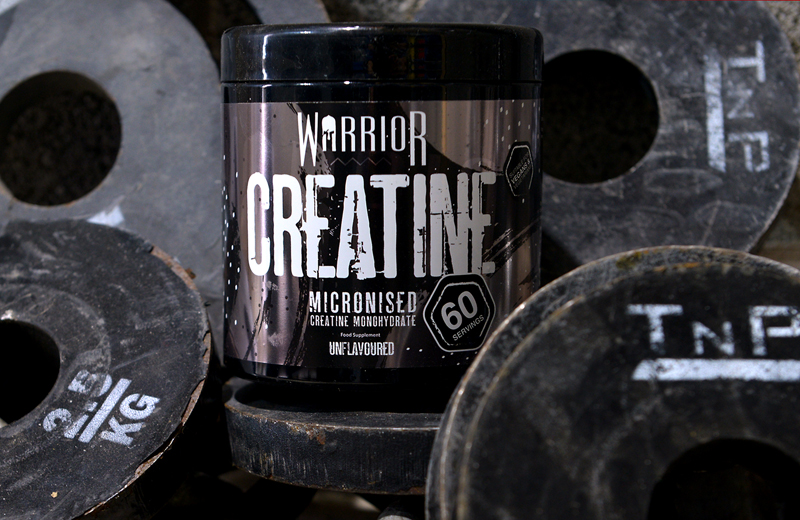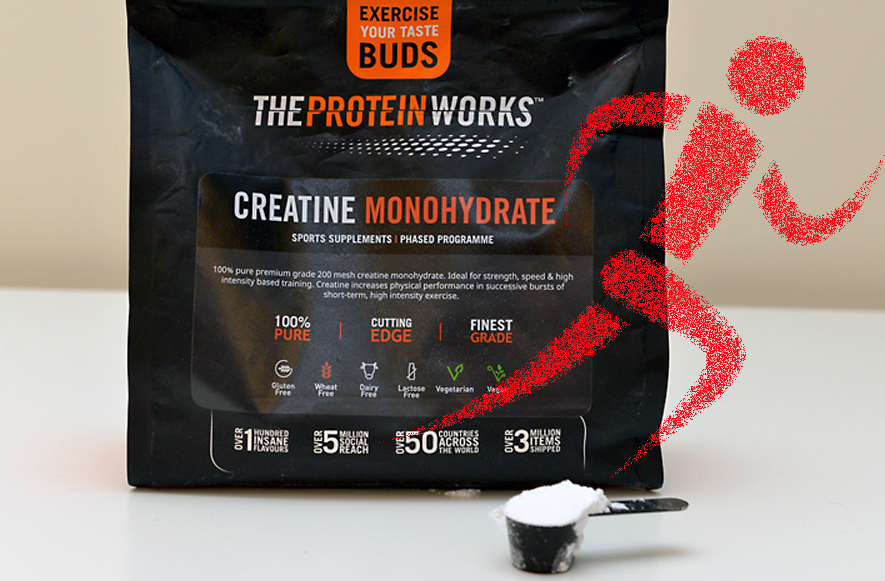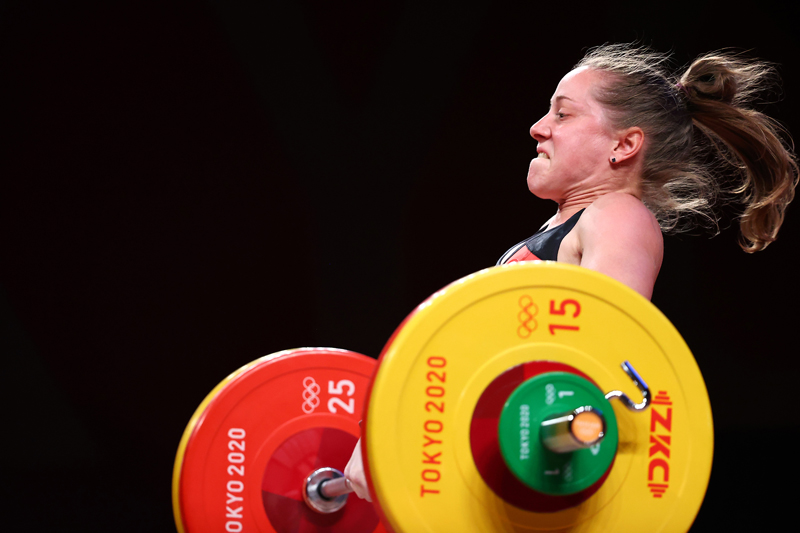Sodium bicarbonate and sodium citrate
Many athletes have reported adverse effects with sodium bicarbonate use and have consequently dismissed the supplement as not right for them. However, they need to be aware that it is the way the product is used as much as the product itself that affects the outcome.
Athletes have been practising ‘soda loading’ or ‘bicarbonate loading’ for over 70 years in an attempt to delay the onset of muscular fatigue during prolonged anaerobic exercise.
Anaerobic glycolysis provides the primary fuel source for exercise of near-maximal intensity lasting longer than about 30 seconds. This system’s total capacity is limited by the progressive increase in acidity within the muscles caused by the accumulation of lactate and hydrogen ions. Increased acidity ultimately inhibits energy transfer and the ability of the muscles to contract, leading to a decrease in exercise performance.
Your natural bicarbonate supply, part of the body’s buffering system, provides a rapid first line of defence against this increased acidity. When the buffering capacity within the cells is exceeded, lactate and hydrogen ions diffuse into the ‘extracellular’ space outside the cells.
With this in mind, scientists have reasoned that increasing the body’s extracellular buffering capacity, by boosting the bicarbonate reserve, will allow hydrogen ions to leave the exercising muscles at a faster rate, thus allowing more ions and lactate to be produced before the acidity within the muscle cells reaches a limiting level.
Scientific studies of bicarbonate loading have employed various protocols, doses and times of ingestion with a range of performance outcomes, summarised in table 1, below.
The cumulative evidence suggests that bicarbonate loading may be of benefit in events conducted at near-maximum intensity for a duration of 1-7 minutes. Sports that are dependent on repeated anaerobic bursts might also benefit.
While pre-exercise sodium bicarbonate does not appear to benefit low intensity aerobic exercise, it may enhance aerobic exercise of higher intensity. In one study, 10 well-trained cyclists were found to complete an average of 14% more work during a 60-minute time trial after consuming a sodium bicarbonate solution at a volume of 300mg per kg of body mass (BM)(7).
Although it is predominantly aerobic, high intensity endurance exercise does cause an increase in lactate accumulation and intracellular acidity that can have a negative effect on performance. Therefore, despite the relatively small anaerobic component of such exertions by comparison with short-term maximal exercise, ingesting sodium bicarbonate beforehand may facilitate lactate and hydrogen ion removal and thus improve muscle function.
| Subjects | Dose (mg per kg of body mass) | Exercise protocol | Enhanced performance | Reference | Summary | |
|---|---|---|---|---|---|---|
| 6 trained middle distance male runners | 300 | Running, 800m | Yes | (1) | Performance time (2:02.9s) significantly faster (2.9s). Rise in pre-exercise pH and standard bicarbonate level. Rise in postexercise lactate and pH | |
| 10 moderately trained females | 300 | Cycling, 60s max effort on ergometer | Yes | (2) | Total work (kJ) and peak power output (W) significantly higher (26.9; 769.4) compared to control (24.6; 728.6) or placebo (24.5; 727.2). Rise in post-exercise lactate | |
| 6 trained males | 400 | Running, 400m | Yes | (3) | Improved running time (56:94s) compared to control (58:46s) and placebo (58:63s). Rise in post-exercise pH | |
| 11 trained female runners + 4 untrained controls | 300 | Running, 600m | No | (4) | No performance effect despite significant changes to acid-base status | |
| 5 elite male rowers | 300 | Rowing, 6 min max effort on ergometer | Yes | (5) | Rise in work and distance rowed (1,861 v 1,813m). Rise in post-exercise lactate | |
| 10 trained swimmers | 250 | Swimming, 5x 100m swim (2 mins recovery) | Yes | (6) | Faster times in 4th and 5th swim | |
| BM = body mass | ||||||
| Subjects | Dose (mg per kg of body mass) | Exercise protocol | Enhanced performance | Reference | Summary |
|---|---|---|---|---|---|
| 7 elite male + 2 elite female athletes | 500 | Running, 3,000m | Yes | (8) | Improved performance time (610.9s) compared to placebo (621.6s) |
| 8 male cyclists | 500 | Cycling, 30k time trial | Yes | (9) | Reduction in time trial time (57:36 v 59:22 min) |
| 11 trained female runners + 4 untrained controls | 300 | Running, 600m | No | (4) | No performance effect despite significant changes to acid-base status |
| 8 trained male cyclists | 200, 400 & 600 | Cycling, 40k time trial (including 500m, 1k & 2k sprints) | No | (10) | No performance effect (time trial or sprints) despite rise in pH |
The generally accepted protocol for bicarbonate loading is to divide the calculated total dose into five relatively even amounts and, starting three hours before competition, to stagger the intake at 30-minute intervals so that loading is complete an hour before the start.
Bicarbonate loading is not thought to pose any major health risk, although some athletes report symptoms of gastrointestinal (GI) distress, including cramping and diarrhoea. Because of this – and to mask bicarbonate’s naturally unpleasant taste – users are recommended to place the bicarbonate in gelatine capsules (available, like bicarbonate, from chemists) and take it at the intervals described above, ideally with plenty of water – ie a litre or more.
There is also some evidence to suggest that substituting sodium citrate (0.3-0.5 g/kg BM, taken as described above) for sodium bicarbonate can further reduce adverse GI effects. Table 2, above, summarises the potential performance impact of this substitute supplement.
As you can see, the research carried out to date on sodium bicarbonate and sodium citrate has produced conflicting results, which could be attributed to variations in dosage and exercise protocols. The significant variation in results also suggests that the mechanism by which this type of loading impacts on performance is more complicated than previously assumed.
It has even been suggested that prolonged high intensity performance may be impaired by bicarbonate/citrate loading owing to an increased rate of glycogen utilisation; and that anaerobically developed athletes may have a reduced response to loading on account of their already superior intrinsic buffering capacity. However, to date these theories have not been supported by research evidence.
Obviously, bicarbonate/citrate supplementation should be practised in appropriate training sessions on several occasions and in a variety of scenarios before striving for a performance effect in competition. If loading is planned for heats and finals on the same or subsequent days, it is advisable to use lower dosages on subsequent occasions to compensate for bicarbonate remaining in the system. The exact dose that is right for an individual can only be determined through experimentation.
In summary…
…both scientific evidence and subjective opinion report performance benefits following bicarbonate/citrate loading prior to brief (1-10 minutes) or prolonged (30-60 minutes) events involving high intensity exercise. Bicarbonate is the body’s most important extracellular buffer, and this form of loading probably increases the muscles’ extracellular buffering capacity as well as their ability to dispose of excess hydrogen ions produced through anaerobic glycolysis.It is important for athletes, with their coaches, to experiment with supplementation in a competition-simulated environment, including practice with multiple loading strategies for heats and finals of an event.
The risk of gastrointestinal side effects cannot be ignored, but these effects are probably less widespread and less severe than is commonly supposed.
The ad hoc use of these supplements by some athletes to date has robbed them of optimal outcomes. However, if they follow the advice given in this article, they should be able to tilt the risk:benefit ratio more clearly in their favour.
Andy Harrison BSc, MSc is a physiologist who works as athlete services manager for the English Institute of Sport
Kevin Thompson PhD, is a physiologist who works as regional manager for the English Institute of Sport
References
- Med Sci Sports Exerc 1983; 15, 277
- J Strength Cond Res 1997; 11, 98
- Eur J Appl Physiol 1988; 57, 45
- J Sports Med Phys Fitness 1995; 35, 194
- Aust J Sci Med Sport 1991; 23, 66
- Eur J Appl Physiol 1988; 58, 171
- Eur J Appl Physiol 1999; 80, 64
- J Strength Con Res 2001; 15, 230
- Int J Sports Med 1996; 17, 7
- Eur J Appl Physiol 2000; 83, 320
You need to be logged in to continue reading.
Please register for limited access or take a 30-day risk-free trial of Sports Performance Bulletin to experience the full benefits of a subscription. TAKE A RISK-FREE TRIAL
TAKE A RISK-FREE TRIAL
Newsletter Sign Up
Testimonials
Dr. Alexandra Fandetti-Robin, Back & Body Chiropractic
Elspeth Cowell MSCh DpodM SRCh HCPC reg
William Hunter, Nuffield Health
Newsletter Sign Up
Coaches Testimonials
Dr. Alexandra Fandetti-Robin, Back & Body Chiropractic
Elspeth Cowell MSCh DpodM SRCh HCPC reg
William Hunter, Nuffield Health
Keep up with latest sports science research and apply it to maximize performance
Today you have the chance to join a group of athletes, and sports coaches/trainers who all have something special in common...
They use the latest research to improve performance for themselves and their clients - both athletes and sports teams - with help from global specialists in the fields of sports science, sports medicine and sports psychology.
They do this by reading Sports Performance Bulletin, an easy-to-digest but serious-minded journal dedicated to high performance sports. SPB offers a wealth of information and insight into the latest research, in an easily-accessible and understood format, along with a wealth of practical recommendations.
*includes 3 coaching manuals
Get Inspired
All the latest techniques and approaches
Sports Performance Bulletin helps dedicated endurance athletes improve their performance. Sense-checking the latest sports science research, and sourcing evidence and case studies to support findings, Sports Performance Bulletin turns proven insights into easily digestible practical advice. Supporting athletes, coaches and professionals who wish to ensure their guidance and programmes are kept right up to date and based on credible science.









